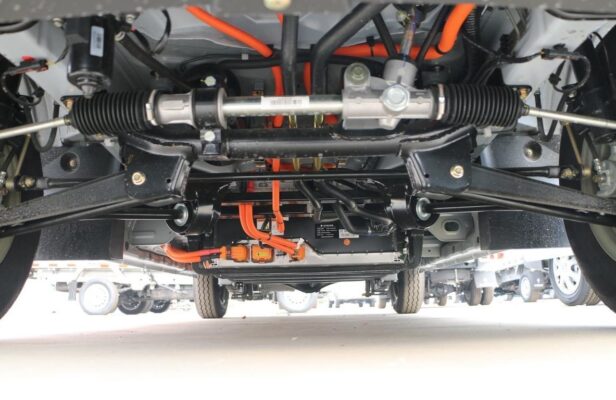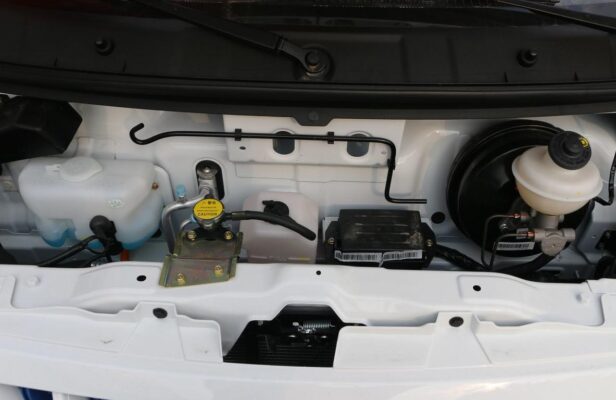Electric Truck Knowledge
What are the precautions for charging pure electric trucks?
Posted on by Electric Trucks
In recent years, the pure electric vehicle industry has witnessed rapid development. Users have gradually transitioned from traditional fuel vehicle users to those of new energy vehicles. As product technologies are constantly updated, users’ personal awareness and operating habits regarding usage should also be upgraded. After all, for ordinary users, pure electric vehicles still represent a novelty. With an increasing number of people employing electric trucks in their daily lives, a growing number of issues have emerged. So, how exactly should electric trucks be charged? Let’s explore this together with the editor.

-
Precautions for the use of lithium batteries
(1) When initiating the charging process, it is essential to ensure that the vehicle body remains dry. The parking brake must be firmly engaged, and the vehicle should be placed in neutral gear or P gear. Maintaining a dry environment helps prevent electrical short circuits and other safety hazards, while the correct gear selection ensures the stability of the vehicle during charging.
(2) There is no requirement to turn on the low-voltage power switch and key switch of the vehicle. This helps avoid unnecessary power consumption and potential electrical conflicts during the charging process.
(3) Position the charging gun plug onto the vehicle body charging socket, ensuring a secure and locked fit. Only after confirming a tight connection should the charger power be switched on. A proper connection is crucial to ensure efficient and safe charging, preventing loose connections that could lead to charging interruptions or even electrical accidents.

(4) Once the charger undergoes a self-check and is verified to be correct, click the charging button. Throughout the charging duration, it is strictly prohibited to operate the vehicle or come into contact with the battery box and charging harness. Operating the vehicle or touching these components during charging can pose significant risks to personal safety and may also cause damage to the charging system.
(5) A conspicuous warning sign must be placed adjacent to the charging vehicle. This serves as a visual reminder to others, preventing accidental interference or potential hazards during the charging process.
(6) Charging should be halted when the single cell voltage reaches 4.15V or when the total voltage reaches the upper limit of charging. Subsequently, the charger power should be switched off. It is of paramount importance to note that both the charger and its power supply must be turned off prior to unplugging the charging gun. This sequence helps safeguard the charging equipment and prevents any potential electrical surges or damage.
(7) During the charging procedure, if any abnormal phenomena are detected, immediate action should be taken to cut off the power supply and contact professional after-sales personnel. Swift response to anomalies can prevent further damage and ensure the safety and integrity of the charging system and the vehicle.
(8) The following considerations should be taken into account when charging using household power sources:

① Ensure that the diameter of the main power line entering the household is not less than 4 square millimeters for a national standard copper wire; for a national standard aluminum wire, it should not be less than 6 square millimeters (typically, the current carrying capacity of a copper wire is 5-6A per square millimeter, and that of an aluminum wire is 3-4A per square millimeter). A sufficient wire diameter is necessary to handle the charging current without overheating or causing voltage drops.
② The copper wire of the charging extension cord should be at least 2.5 square millimeters, and the diameter of the aluminum wire should not be less than 4 square millimeters. For instance, for a 60V 30A charger, the alternating current is approximately 11A. Electric Home recommends that a dedicated charging line for electric vehicles be installed separately to meet the aforementioned requirements, considering both the interests and safety of customers. A dedicated and appropriately sized charging line reduces the risk of electrical faults and ensures reliable charging.
③ Install a 32A leakage protection switch on the main power line entering the household. For the charging socket, select a high-quality 16A, 3C-certified power strip. The leakage protection switch provides an added layer of safety in case of electrical leaks, while a certified power strip ensures the quality and reliability of the charging connection.
④ Charging plugs, sockets, charging guns, and charging sockets are vulnerable components. They should be inspected regularly for any signs of damage or aging. In the event of any identified issues, they should be promptly replaced. Regular inspections and timely replacements help maintain the integrity and functionality of the charging system, reducing the risk of charging failures and safety concerns.
It is important to note that proper charging practices not only extend the lifespan of the battery and vehicle but also ensure the safety of users and the surrounding environment. By adhering to these precautions and guidelines, users can enjoy the benefits of electric trucks while minimizing potential risks and issues.

In addition, users should also be familiar with the manufacturer’s recommended charging procedures and safety guidelines specific to their vehicle model. Keeping up-to-date with the latest information and technological advancements in electric vehicle charging is crucial for a seamless and safe charging experience.
Furthermore, as the electric vehicle market continues to expand and evolve, infrastructure improvements and standardized charging protocols will likely become more widespread. This will further enhance the convenience and reliability of charging pure electric trucks in the future.
In conclusion, charging pure electric trucks requires a combination of knowledge, vigilance, and adherence to safety and best practices. By taking these precautions seriously, users can make the most of their electric trucks while ensuring a safe and efficient charging process.